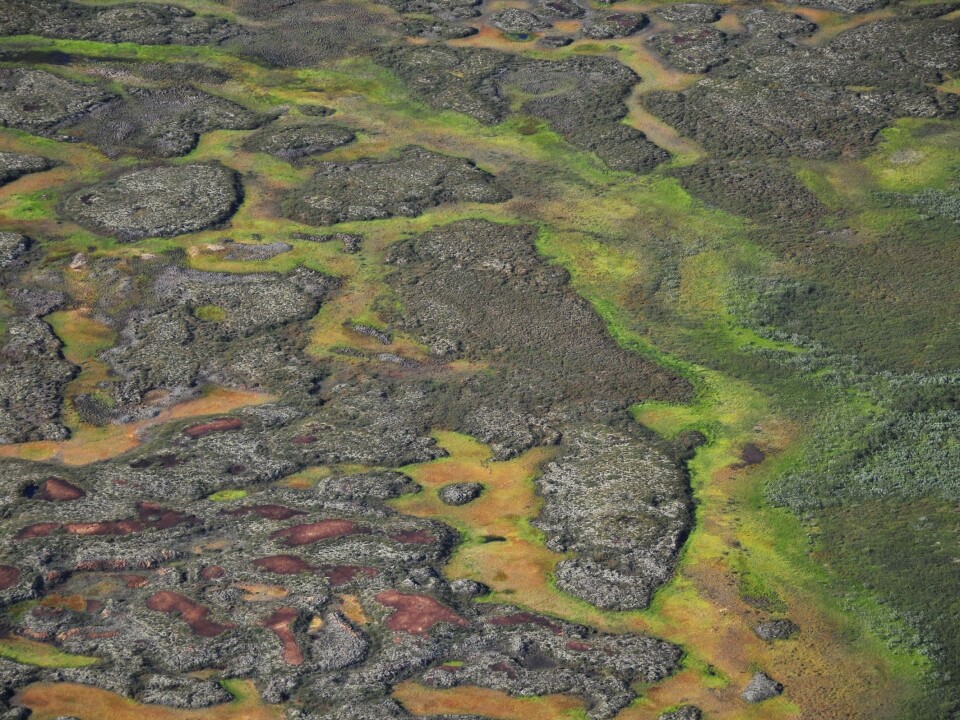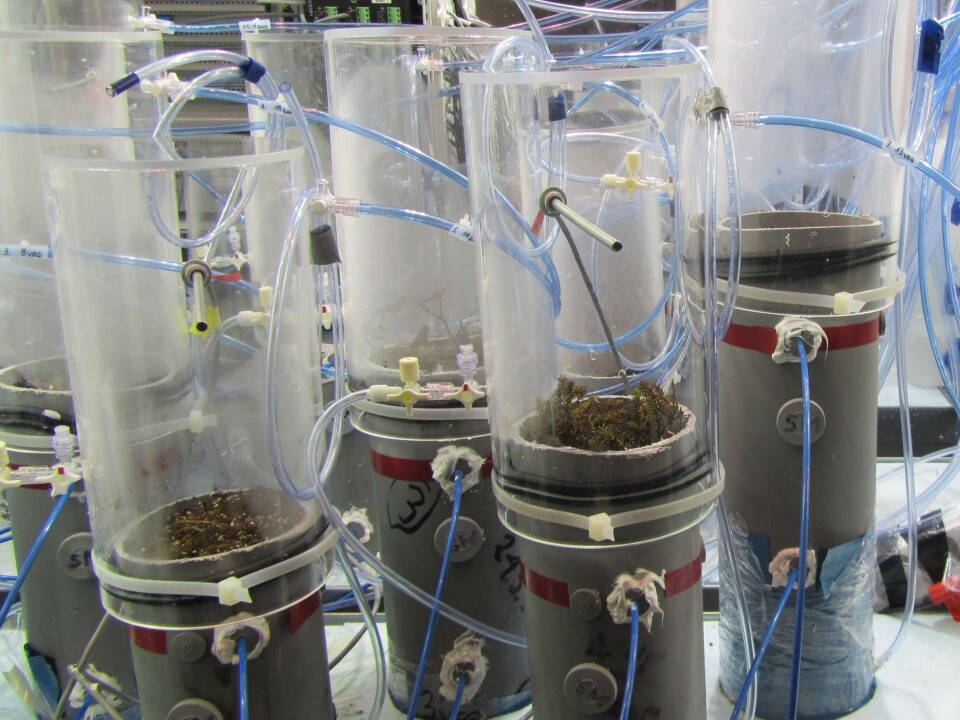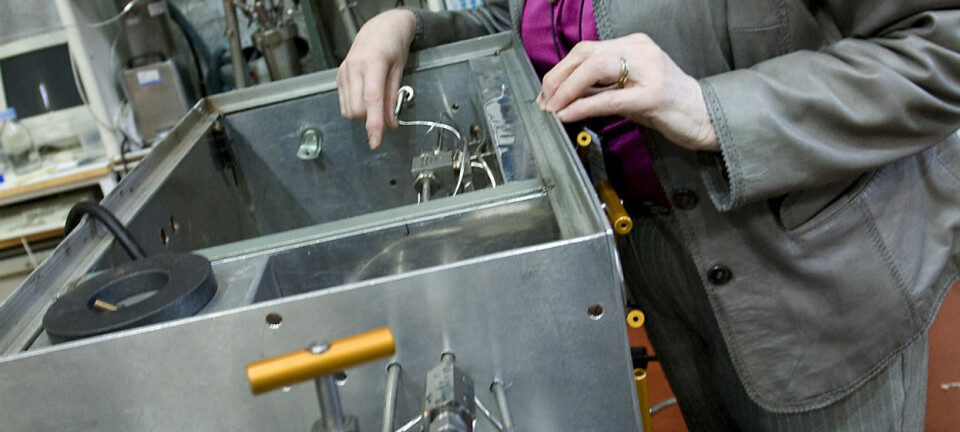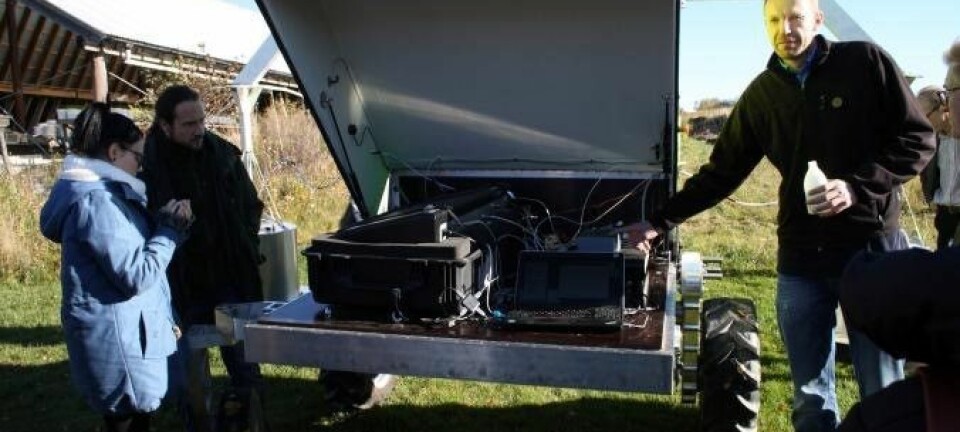
One quarter of the Arctic is a hotbed for overlooked greenhouse gas
New study shows how thawing Arctic peat releases large quantities of nitrous oxide—an overlooked greenhouse gas that is almost 300 times more powerful than carbon dioxide.
As the evidence for the effects of man-made climate change mounts, so does scientists’ understanding of the many subsequent processes that could further exasperate it—the unwanted spin offs of a warming planet, otherwise known as positive feedbacks.
One of these is documented in a new study that looks at emissions of the greenhouse gas nitrous oxide (N2O) contained in the frozen soils of Arctic peatlands.
Many studies have reported the risk posed by the vast amounts of carbon stored within permafrost soils across the Arctic. But few have looked at its more potent cousin, nitrous oxide, which is almost 300 times more powerful than CO2 when it comes to trapping the heat of our sun and warming the Earth.
The new study shows that as the Arctic soils thaw, the amount of N2O released into the atmosphere increases fivefold.

“That’s the main message of this study: Permafrost can release large amounts of N2O across large areas of the Arctic, but there are only a few measurements to quantify how high these emissions could actually be,” says lead-author Carolina Voigt from the Department of Environmental and Biological Sciences at the University of Eastern Finland.
One quarter of the Arctic could release N2O
The study has quantified how much N2O is released form Arctic peat, based on analyses of a collection of soils sampled in the Finnish Lapland. In the laboratory at Lund University, Voigt and colleagues gradually thawed the soils while measuring the amount of N2O emissions.
The thawed soil emitted up to five times as much of this potent greenhouse gas as frozen soils.
While Voigt is not able to estimate how much gas could be emitted across the entire Arctic, she was able to identify areas which are most vulnerable to thaw and could be a source of N2O in the future.

This covers as much as one quarter of the northern circumpolar permafrost region, stretching from central Norway, across Siberia, and over to Canada.
Ten per cent of this area—around 1.9 million square kilometres—consists of peatlands similar to those that Voigt collected in Finland, which she identifies as being the most likely future hotspots for N2O emissions.
“These soils contain large nitrogen stocks that have developed in the peat layer and can be several metres thick and thousands of years old. When they thaw, then very gradually, the stored nitrogen is released,” says Voigt.
These areas span the southern tundra of the subarctic where temperatures are rising quickly and where permafrost is most vulnerable to thaw, she says.
Indirect effects of climate change more concerning than climate change itself

The new study provides “additional evidence for the existence of strong feedbacks between anthropogenic climate change and greenhouse gas emissions,” says Dr. Thomas Crowther from the Netherlands Institute of Ecology, who studies carbon emissions from Arctic soils.
These indirect effects of climate change could be even more damaging than climate change itself, says Crowther.
“The direct effects of human greenhouse gas emissions are obviously concerning because they are drastically altering the planet. But these indirect effects could be even more concerning because the feedbacks may continue for a long time—even if we stopped burning fossil fuels immediately,” he says.
For Crowther, the timing of the study is even more significant given recent political events in the USA.
“This paper comes at an interesting time, given the announcement of President Trump's intentions to pull out of the Paris agreement—a move that will leave the country behind as the rest of the world moves forward in the fight against the serious threat of climate change,” says
Co-author: N2O is still a minor greenhouse gas
But no matter the potential for future emissions of any type of greenhouse gas from the Arctic, we should not lose sight of what is actually driving climate change today, says co-author Torben Christensen from the Department of Physical Geography and Ecosystem Science, Lund University, and Aarhus University, Denmark.
“It’s fairly well-documented that these natural emissions might hold the potential for really important and dramatic changes, but we have no indications that this is happening yet. And when we fully calculate what is causing changes to climate right now it is almost 100 per cent man-made greenhouse gases,” he says.
Instead the study provides important background information to understand these types of changes that could follow in a warmer Arctic and offers new insights to a relatively understudied greenhouse gas, says Christensen.
Soils from Finnish Lapland reveals rapidly mobilised N2O
Voigt and her colleagues drilled down into peatland soils to collect 16 cores, which she took back to the lab. She collected both bare soil, with no vegetation, as well as vegetated soil to see how they responded to thaw.
They froze the cores immediately and then set them up in a so-called climate chamber in the laboratory where they measured N2O emissions as well as other nutrients and soil parameters over a period of 33 weeks as they gradually allowed the cores to thaw using a specially designed water bath containing a cooling agent.
By the end of the experiment, when the lower part of the cores had thawed, the bare soils emitted on average 2.81 milligrams of gas per square metre each day—five times as much as they did when the permafrost part was still frozen at the beginning of the experiment, when the permafrost was still frozen.
For Christensen, these methods are a particularly exciting outcome of the new study.
“They took these samples and drilled into the permafrost and transported them 2,000 km without changing the temperature regime at all. So when we studied this in the lab in Lund it became a really interesting study—one of the first that I’ve seen that realistically documents in the lab, what happens when we change the active layer depth of the permafrost,” says Christensen.
Dry, bare soils emit more N2O
“We also did some different water treatments—in some cores we left the water table as it can be found in the field, well below the surface, and in the other cores we raised the water table to five to ten centimetres below the surface to simulate wet conditions or a partial peatland collapse. And when we raised the water table it suppressed the emissions completely,” says Voigt.
Taken together, the results suggest that wet vegetated soils emit less N2O than bare dry soils. And this highlights a big question for scientists in the years to come: will climate change make the Arctic wet and green, or dry and brown?
“There’s a lot of uncertainty,” says Voigt. “There was a study last year that showed some parts of the Arctic which were greening had reversed to a trend of Arctic browning. But it wasn’t the whole Arctic.”
Christensen agrees.
“That’s the 10,000 dollar question. I don’t think we have a consensus. That’s worrying in a sense because the wetting and/or drying will be the most important factor for changing not only greenhouse gas exchange but also the energy exchange, which is where greening versus browning comes in. And [model] projections are all over the place in terms of which direction it will go. So we can’t say,” he says, adding that to answer this question will require a much better understanding of Arctic hydrology—how water moves around the Arctic landscape.
Need to monitor across the Arctic
Despite this uncertainty, scientists now need to monitor N2O emissions at sites across the Arctic to estimate how much of the gas could be released under the right conditions so that these data can be included in climate model projections, says Voigt.
“I think it’s very much neglected. Climate models focus on CO2 and methane, and perhaps export of dissolved organic carbon, but as far as I know N2O is not included in the majority of climate projections. It needs to be included, but more studies are needed to get an actual number and also to look across a number of different permafrost zones,” says Voigt.
Further measurements would certainly help, says Christensen.
“When comparing the gram per gram impact on climate with CO2, then N2O is very powerful—but it’s present in much smaller concentrations in the atmosphere. And when you add up its contribution to the overall greenhouse effect, it’s still relatively minor compared with CO2 and methane. But that could change—the proportional contribution could change if we had more measurements,” he says.











